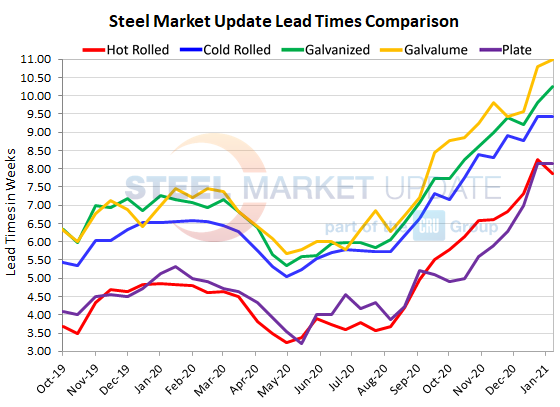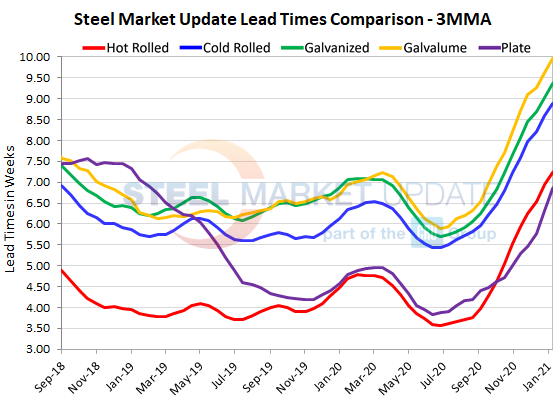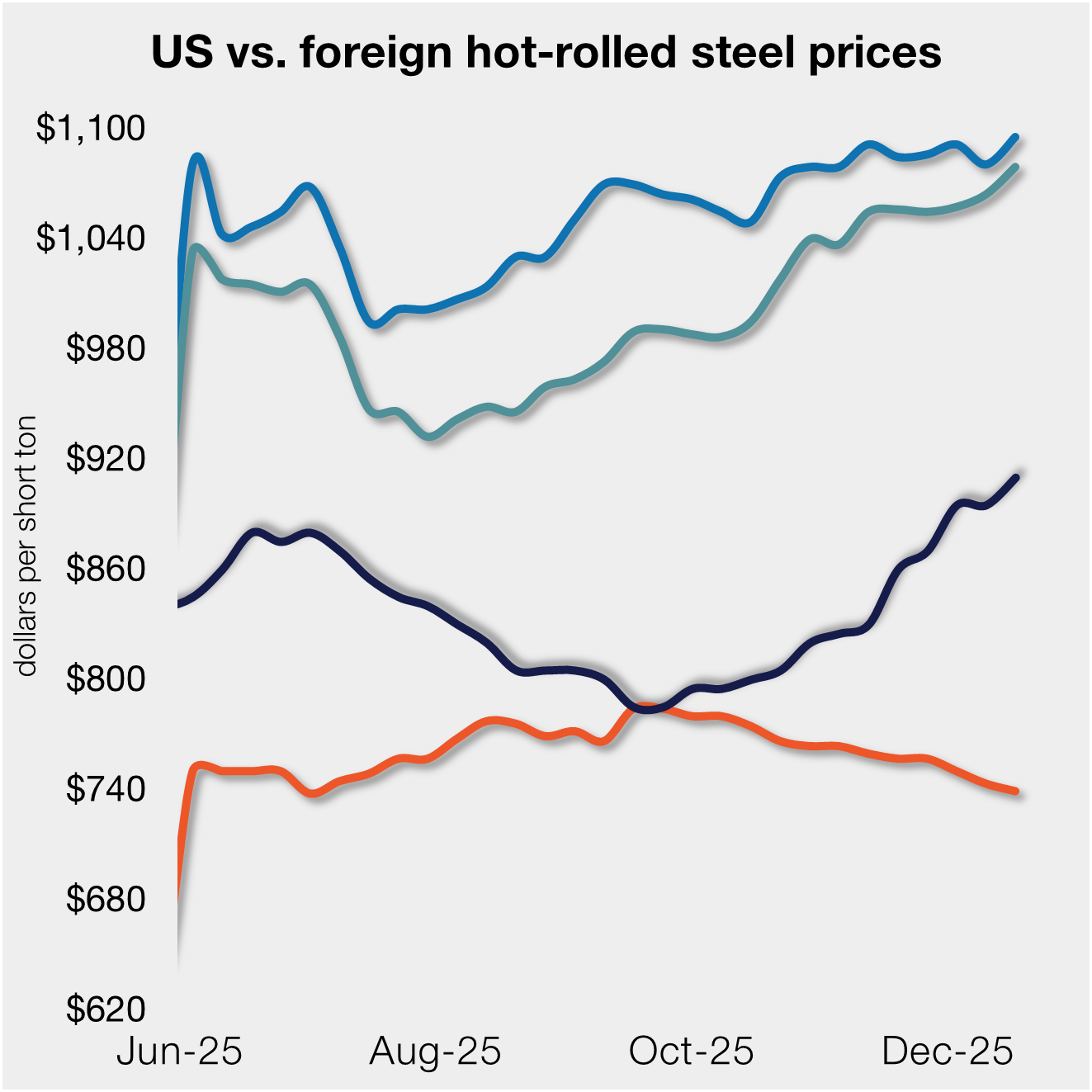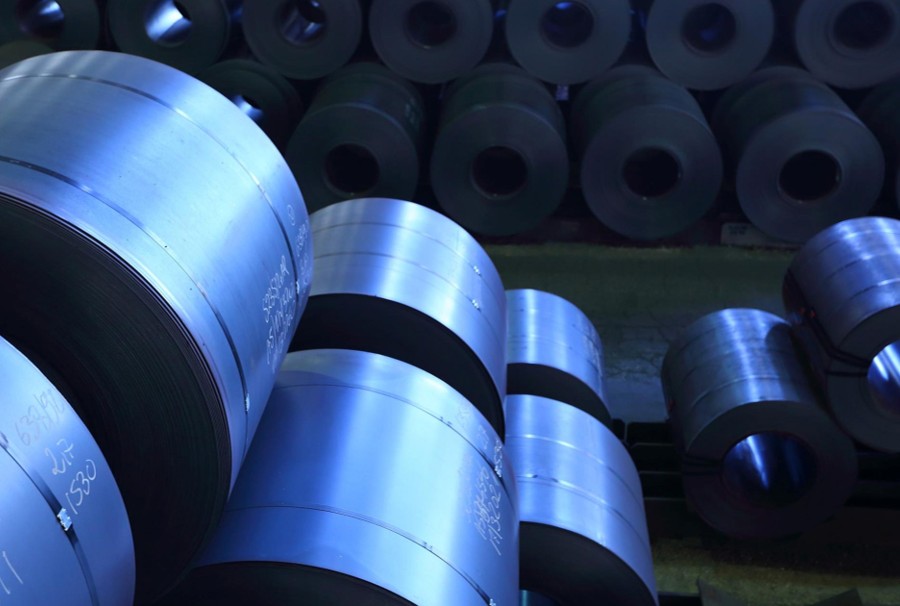Market Data

January 7, 2021
Steel Mill Lead Times: Little Change in New Year
Written by Tim Triplett
Hot rolled lead times were slightly shorter this week, but lead times for other products were the same or slightly longer, based on Steel Market Update’s first check of the market in the new year. Lead times for deliveries of hot rolled were still highly extended at an average of nearly eight weeks, and it’s too early to tell if the slight shortening is a statistical blip or the initial sign of a change in the works. Lead times are an indicator of steel demand—longer lead times mean the mills are busy and less likely to negotiate on price.
Current hot rolled lead times average 7.87 weeks, down slightly from 8.24 two weeks ago. HR lead times have extended by four and a half weeks since hitting 3.25 weeks at the low point in April.
Cold rolled lead times are at 9.43 weeks, about the same as in late December. Like hot rolled, cold rolled lead times are more than a month longer than in late April.
Galvanized lead times now average 10.25 weeks, up from 9.81 two weeks ago—about five weeks longer than the low point this spring. Similarly, the current average Galvalume lead time is out to 11.00 weeks.
Plate lead times leveled out at 8.13 weeks after extending gradually since October. Plate lead times bottomed at 3.20 weeks back in May.
Viewed as three-month moving averages to smooth out the volatility, hot rolled lead times have continued to extend to 7.24 weeks, cold rolled 8.88 weeks, galvanized 9.38 weeks, Galvalume 9.98 weeks and plate 6.84 weeks.
Note: These lead times are based on the average from manufacturers and steel service centers who participated in this week’s SMU market trends analysis. Our lead times do not predict what any individual may get from any specific mill supplier. Look to your mill rep for actual lead times. Our lead times are meant only to identify trends and changes in the marketplace. To see an interactive history of our Steel Mill Lead Times data, visit our website here.


By Tim Triplett, tim@steelmarketupdate.com







